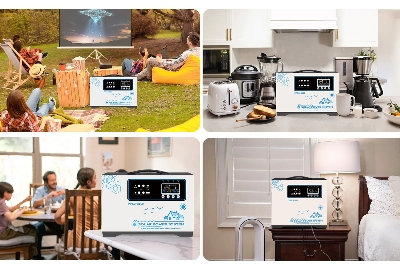How Can a Solar Storage System Maximize the Efficiency of Home Energy Usage?
Oct 23, 2025
With the global energy transition accelerating, Solar Storage Systems have become a key component in optimizing household and commercial power use. As more homes install solar panels, the need for effective energy storage grows. The integration of Lithium Battery Solar Systems and advanced configurations like the Stacked Lithium Battery Solar Storage System is transforming how electricity is stored and consumed, reducing waste and improving independence from the grid.
The Role of Solar Storage Systems in Modern Energy Management
Solar panels generate energy during the day, but consumption often peaks in the evening. A Solar Storage System bridges this gap, storing excess electricity produced during daylight hours for later use. This process increases energy utilization efficiency by up to 30–40%, depending on system design and local sunlight conditions.
Time of Day
Solar Energy Production (kWh)
Household Consumption (kWh)
Energy Storage Utilized (kWh)
Morning (6–10 AM)
2.5
3.0
0.5
Afternoon (10 AM–4 PM)
8.0
5.5
2.5
Evening (4–10 PM)
1.0
4.5
3.0
Night (10 PM–6 AM)
0
2.5
2.5
From this data, it’s clear that without energy storage, more than 35% of solar generation would be lost or sold back to the grid at low rates.
Lithium Battery Solar System: The Core of Reliable Energy Storage
The most efficient and widely used type of solar storage solution today is the Lithium Battery Solar System. These systems outperform lead-acid batteries in several ways:
Feature
Lithium Battery
Lead-Acid Battery
Cycle Life
4000–6000 cycles
500–1000 cycles
Depth of Discharge
Up to 90%
50%
Energy Density
150 Wh/kg
40 Wh/kg
Maintenance
No maintenance
Regular check required
Efficiency
95%+
80%
The higher cycle life and discharge rate make lithium batteries the most sustainable choice for solar applications. They ensure long-term reliability, especially in hybrid and off-grid systems.
Stacked Lithium Battery Solar Storage System: Modular and Scalable
For large households or commercial buildings, scalability is crucial. The Stacked Lithium Battery Solar Storage System solves this by allowing modular capacity expansion. Users can stack multiple units vertically to increase total storage from 10 kWh to 100 kWh or more.
Each stack operates under a Battery Management System (BMS) that balances cells, monitors temperature, and prevents overcharging or short circuits. This flexibility makes stacked systems ideal for microgrids and remote installations where consistent power supply is critical.
Portable Solar Storage System: Power on the Move
In contrast, the Portable Solar Storage System targets mobility and convenience. With capacities ranging from 300 Wh to 2000 Wh, these units are essential for outdoor activities, emergency backup, or small-scale energy supply. Lightweight lithium batteries and compact inverters enable users to power laptops, lighting, and even small refrigerators without relying on the grid.
Application
Typical Capacity
Charging Time
Output Ports
Camping
500 Wh
6–8 hours
AC/DC/USB
Mobile Office
1000 Wh
5–7 hours
AC/DC/USB-C
Emergency Use
1500 Wh
4–6 hours
Multiple AC outputs
Portable systems are also being adapted for disaster relief and rural electrification projects due to their reliability and independence.
Energy Efficiency and Smart Integration
Modern solar storage solutions integrate smart energy management software that tracks production, consumption, and battery health in real time. Systems using AI-based control can automatically decide when to charge or discharge, achieving an additional 10–15% efficiency improvement compared to traditional systems.
Integration with IoT-enabled smart meters allows homeowners to monitor energy flows on their phones, ensuring transparency and better energy budgeting.
Market Trends and Growth Outlook
According to data from IEA (International Energy Agency), global residential solar-plus-storage installations are projected to grow from 3.5 million units in 2023 to 12 million by 2030, representing a compound annual growth rate of 18.5%. The shift toward energy independence, government incentives, and falling battery costs are the main drivers.
The average price of lithium-ion batteries has dropped from $1200/kWh in 2010 to under $150/kWh in 2025, making solar storage systems more accessible to households and small businesses.
Why Solar Storage Systems Matter
Solar storage not only reduces dependence on fossil fuels but also enhances resilience. During grid failures or natural disasters, a home with a Lithium Battery Solar System can maintain critical functions for hours or even days.
Businesses using Stacked Lithium Battery Solar Storage Systems can continue operations uninterrupted, preventing costly downtime.
For travelers and outdoor enthusiasts, a Portable Solar Storage System offers freedom and sustainability, providing green energy wherever it’s needed.


 دعم الشبكة
دعم الشبكة